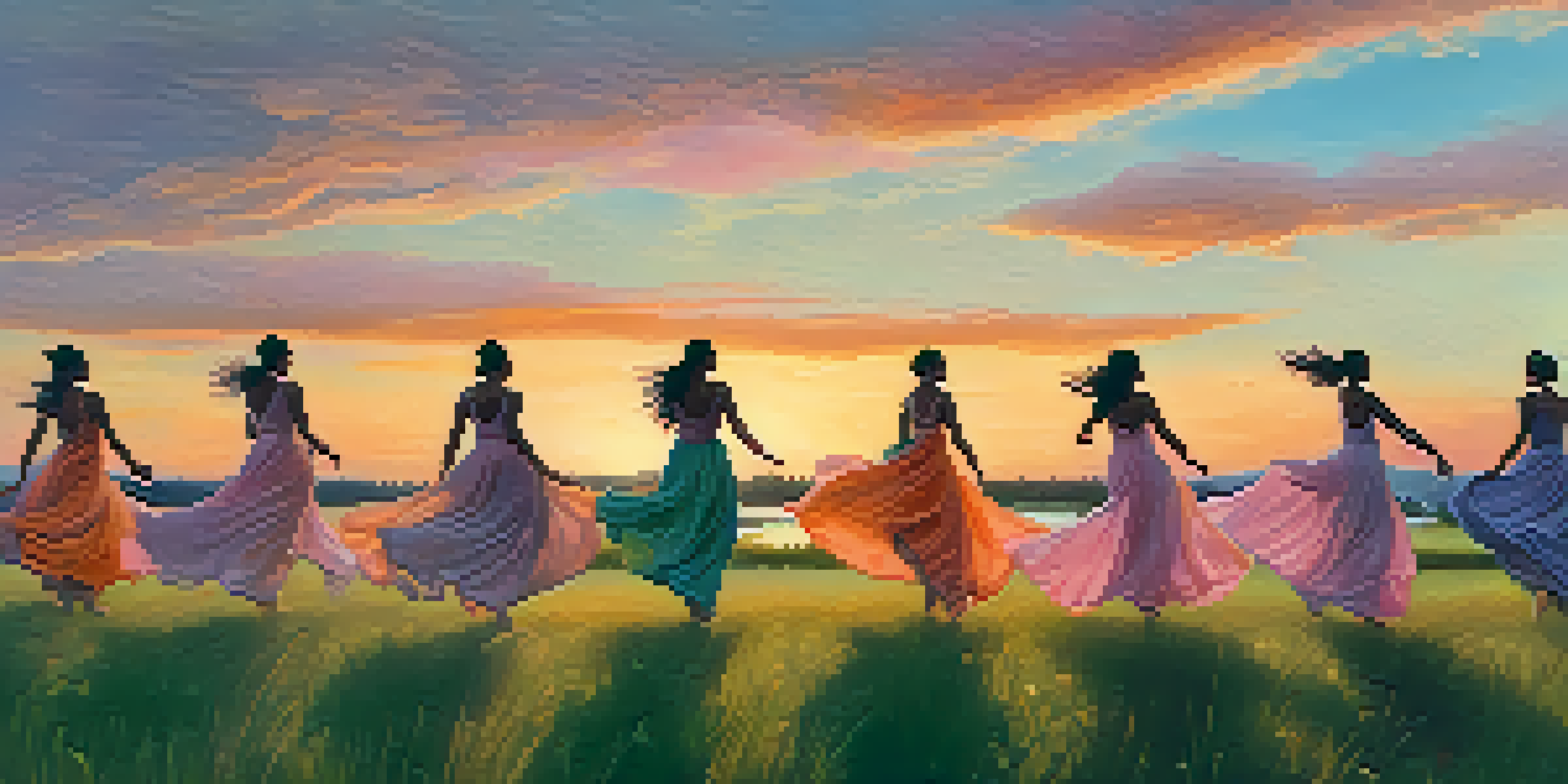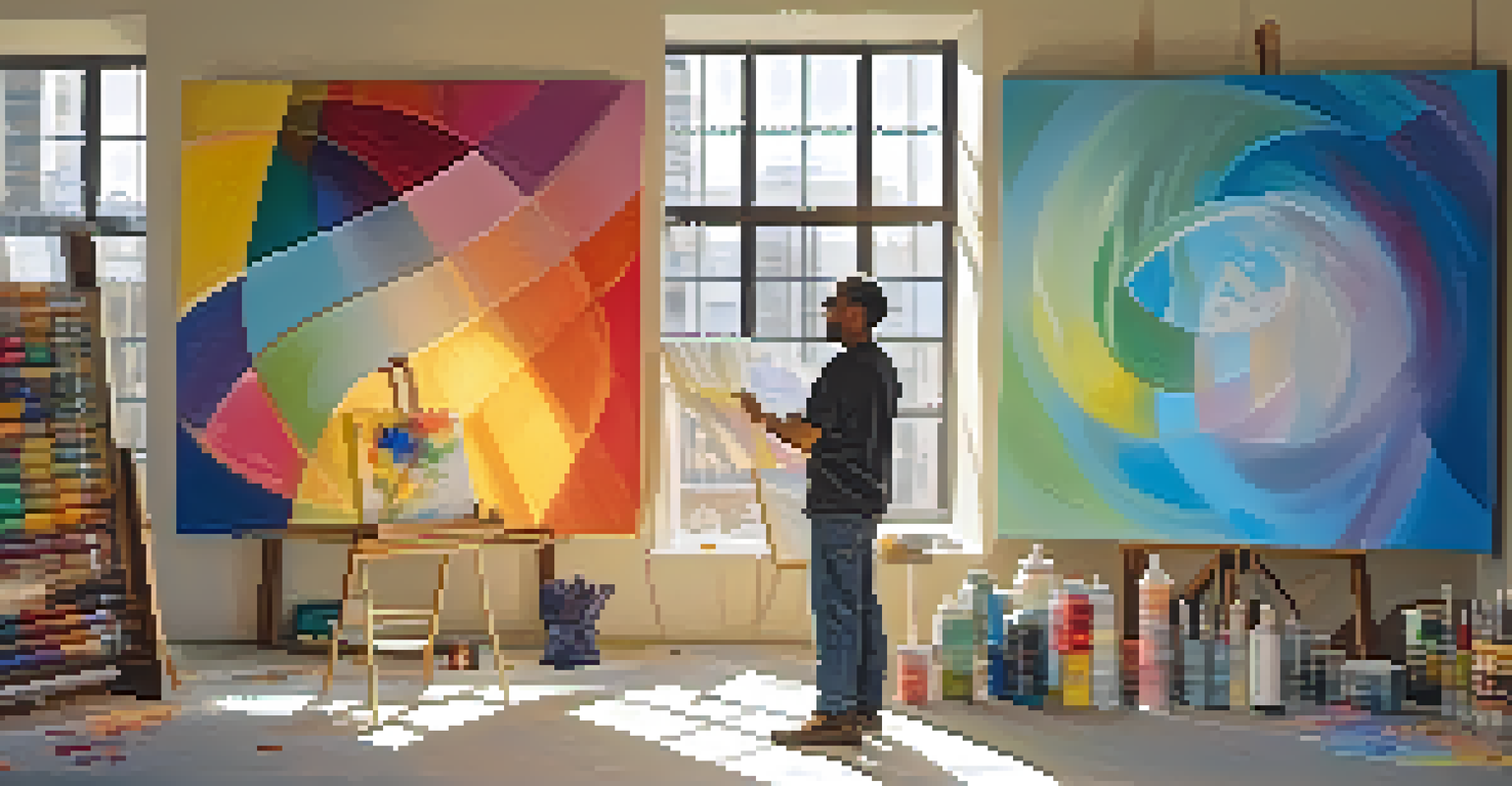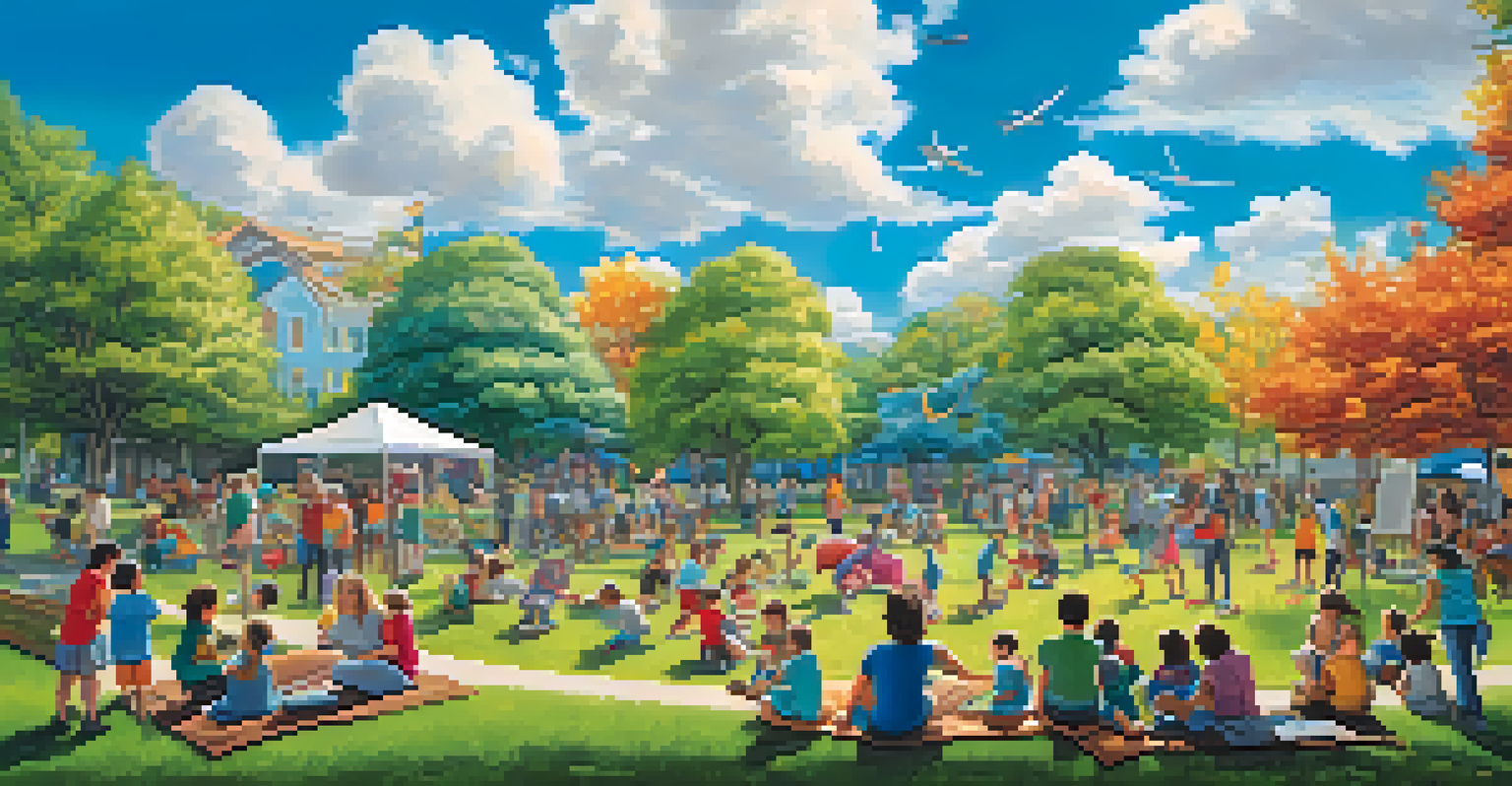The Connection Between Dance, Art, and Spiritual Expression

The Essence of Dance and Art as Spiritual Practices
Dance and art have long been recognized as forms of spiritual expression, each offering unique pathways to connect with something greater. When we dance, our bodies become vessels of emotion and intention, allowing us to communicate feelings that words often cannot express. Similarly, visual arts provide a canvas for the soul, where colors and shapes can convey the depths of human experience. Together, these forms create a rich tapestry of spiritual connection that transcends the mundane.
Dance is the hidden language of the soul.
For many cultures, rituals involving dance and art are integral to spiritual ceremonies, acting as a bridge between the physical and the divine. These practices often aim to invoke feelings of unity, celebration, and reverence, allowing participants to feel a sense of belonging within a larger community. Whether it’s the rhythmic beat of a drum guiding dancers or the vibrant strokes of a painting capturing the essence of a moment, both art forms help express the ineffable.
In essence, both dance and art serve as vehicles for spiritual exploration, enabling individuals to delve into their inner selves and discover deeper meanings in their lives. They remind us that creativity can be a powerful tool for spiritual growth, allowing us to express what lies within while also connecting with others who share similar journeys.
Historical Perspectives on Dance and Spirituality
Throughout history, dance and art have played pivotal roles in various spiritual traditions worldwide. From ancient tribal rituals to modern spiritual practices, these expressive forms have often functioned as a means of worship or connection to the divine. Historical accounts show that many cultures used dance to celebrate life events, seasons, and spiritual milestones, demonstrating its significance in fostering community bonds.

For example, the Sufi tradition incorporates dance as a form of spiritual devotion, with the whirling dervishes embodying a physical manifestation of their quest for divine connection. Similarly, Indigenous cultures often engage in dance as a way to honor ancestors and invoke spiritual guidance. These practices highlight how, across different eras and cultures, dance has been a fundamental aspect of spiritual expression.
Dance and Art as Spiritual Tools
Both dance and art serve as powerful vehicles for spiritual exploration and emotional expression.
Art, too, has historically served as a conduit for spiritual reflection. Iconic pieces, such as religious paintings and sculptures, have been created to inspire contemplation and connect viewers with their faith. This rich history underscores the enduring connection between dance, art, and spirituality, inviting us to explore how these practices continue to shape our understanding of the divine today.
The Emotional Landscape of Dance and Art
Dance and art are inherently emotional experiences, often mirroring the complexities of human feelings. When we engage in these activities, we tap into a vast emotional reservoir that allows us to express joy, sorrow, love, and even anger. This emotional expression is not only cathartic but also serves as a reminder of our shared humanity, creating a connection between the performer and the observer.
Art is the most beautiful of all lies.
For instance, a ballet performance can evoke a spectrum of emotions, from the grace of love to the pain of loss, resonating deeply with audiences. Similarly, a poignant painting can stir feelings of nostalgia or hope, drawing viewers into a reflective space. This emotional exchange fosters a sense of empathy and understanding, as people connect through their shared experiences.
Ultimately, the emotional landscape of dance and art enhances our spiritual journeys by allowing us to confront and process our feelings. It encourages vulnerability and authenticity, creating a safe space for exploration and connection with both ourselves and others.
Modern Interpretations of Dance and Spirituality
In contemporary society, the connection between dance, art, and spirituality is evolving, reflecting our changing cultural landscapes. Many modern artists and dancers are exploring themes of spirituality in their work, often intertwining various disciplines to create immersive experiences. This evolution showcases how spiritual expression can adapt to current societal needs while still honoring traditional practices.
For example, choreographers like Pina Bausch have redefined dance as a means of exploring existential themes, while visual artists like Yayoi Kusama incorporate elements of spirituality into their installations. These modern interpretations invite audiences to engage with spirituality in fresh and innovative ways, making it more accessible to a broader audience.
Community Enhances Spiritual Growth
The collective experience of creating and appreciating art fosters connections that amplify spiritual journeys.
Furthermore, the rise of wellness movements has led to a renewed interest in the spiritual aspects of dance and art. Practices like yoga dance and expressive arts therapy emphasize the healing potential of these forms, encouraging individuals to reconnect with their inner selves and foster a deeper sense of spirituality.
The Role of Community in Artistic Expression
Community plays a crucial role in both dance and art, enhancing the spiritual experience by fostering connections among individuals. When people come together to create or appreciate art, they form bonds that can be both uplifting and transformative. This sense of belonging not only enriches the artistic process but also enhances the spiritual journey of those involved.
For instance, group dance classes or community art projects create spaces where individuals can share their stories and experiences, often leading to profound connections. These shared experiences foster a sense of unity and collective expression, amplifying the spiritual essence of the art being created. In this way, community becomes a vital ingredient in the alchemy of dance and art.
Moreover, the collective energy generated during group performances or exhibitions can elevate the spiritual experience, creating a palpable sense of connection and purpose. This communal aspect serves as a reminder that we are not alone in our journeys, and that together, we can explore the depths of our spiritual expressions.
Dance and Art as Tools for Personal Growth
Engaging in dance and art can be powerful tools for personal growth, allowing individuals to explore their spirituality on a deeper level. These creative outlets encourage self-reflection, helping people to better understand their emotions, beliefs, and experiences. As individuals become more attuned to their inner selves, they often find clarity and direction in their spiritual paths.
For instance, many people find that journaling about their artistic experiences or dancing freely in a private space can lead to moments of insight and revelation. These practices promote mindfulness, making individuals more aware of their thoughts and feelings as they navigate their spiritual journeys. This process of self-discovery can be incredibly empowering and transformative.
Modern Interpretations of Spirituality
Contemporary artists and dancers are redefining spirituality through innovative practices that resonate with today's cultural landscape.
Additionally, the practice of creating art or dancing regularly can serve as a form of meditation, allowing individuals to connect with their spirituality in a meaningful way. By dedicating time to these activities, they cultivate a deeper relationship with themselves and their beliefs, ultimately enriching their spiritual lives.
Conclusion: Embracing the Connection for Spiritual Fulfillment
In conclusion, the connection between dance, art, and spiritual expression is a rich and multifaceted relationship that has the power to transform lives. By embracing these forms of creativity, individuals can explore their spirituality in profound ways, tapping into emotions and experiences that connect them to themselves and the world around them. This journey of exploration invites us to reflect on our own paths and how we express our beliefs and feelings.
Whether through traditional practices or modern interpretations, dance and art provide avenues for connecting with the divine and fostering community. They remind us that spirituality is not confined to specific rituals or beliefs but can be expressed through various creative forms. As we engage with these practices, we open ourselves to a broader understanding of what it means to be human.

Ultimately, by celebrating the interplay of dance, art, and spirituality, we invite a deeper sense of fulfillment and connection in our lives. So, let us dance freely, create passionately, and explore the spiritual dimensions that lie within and around us.